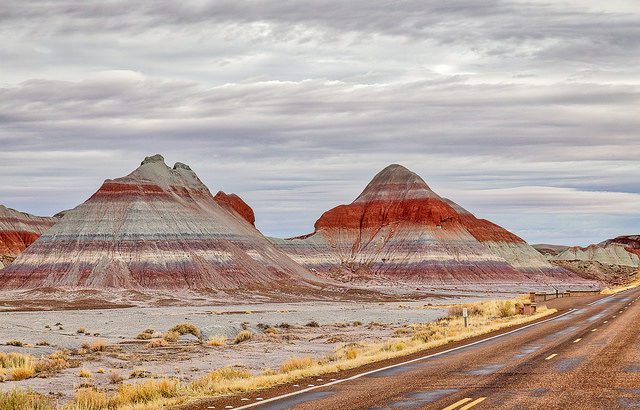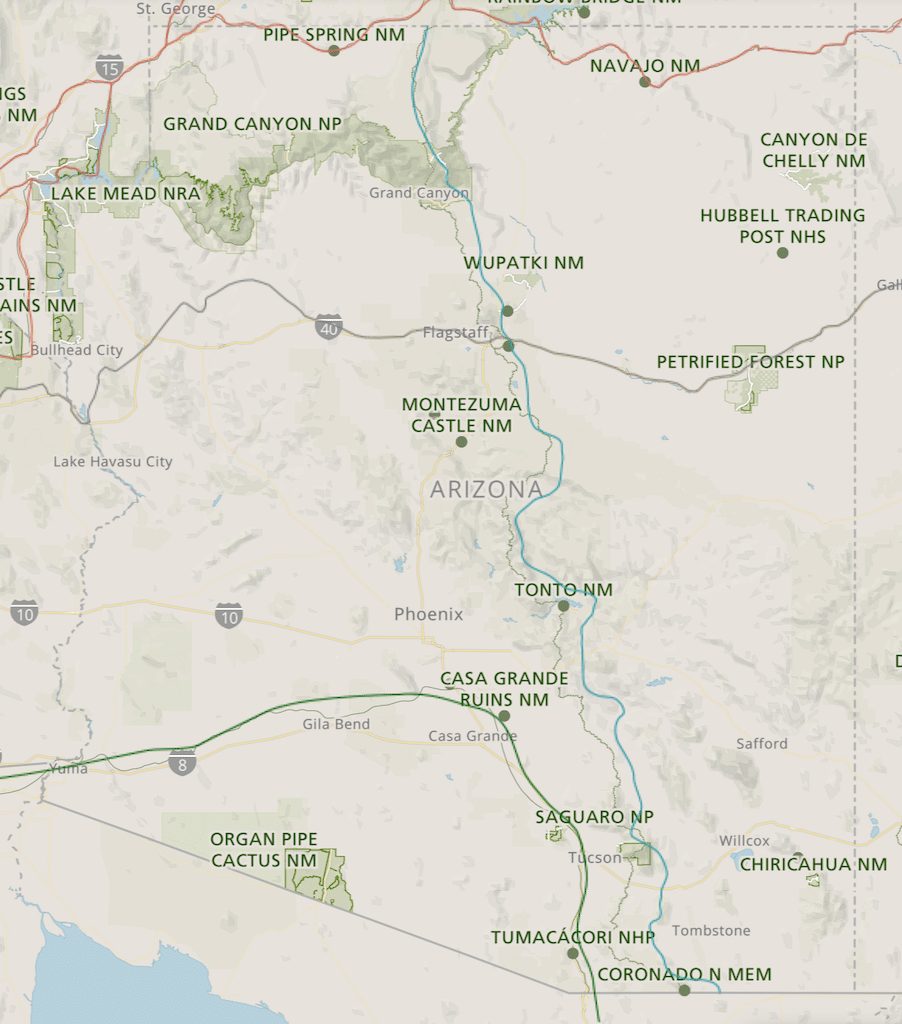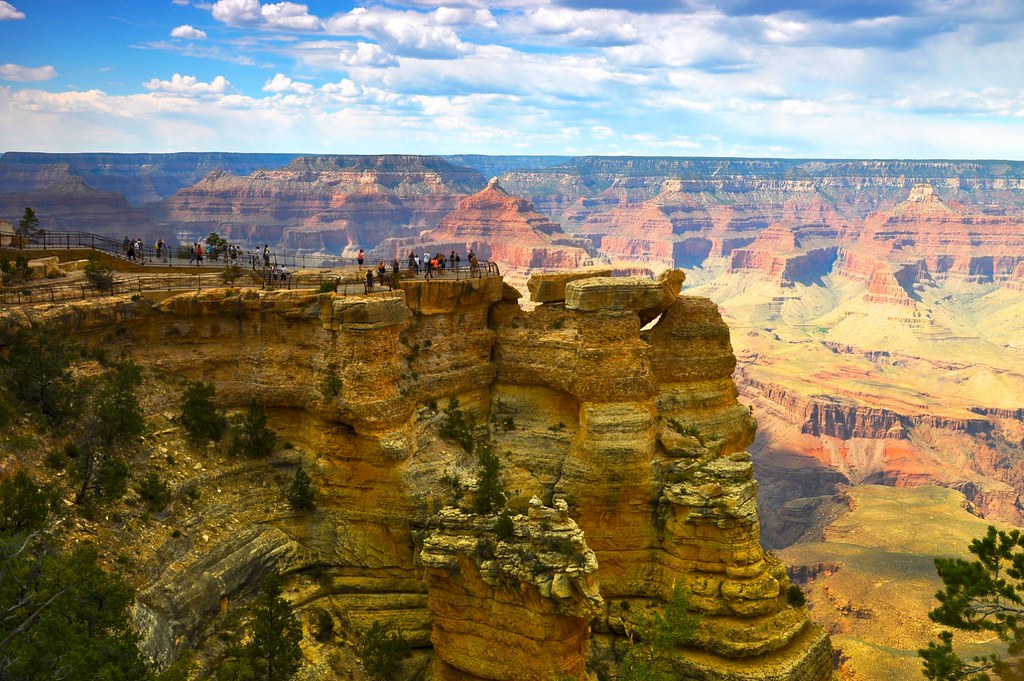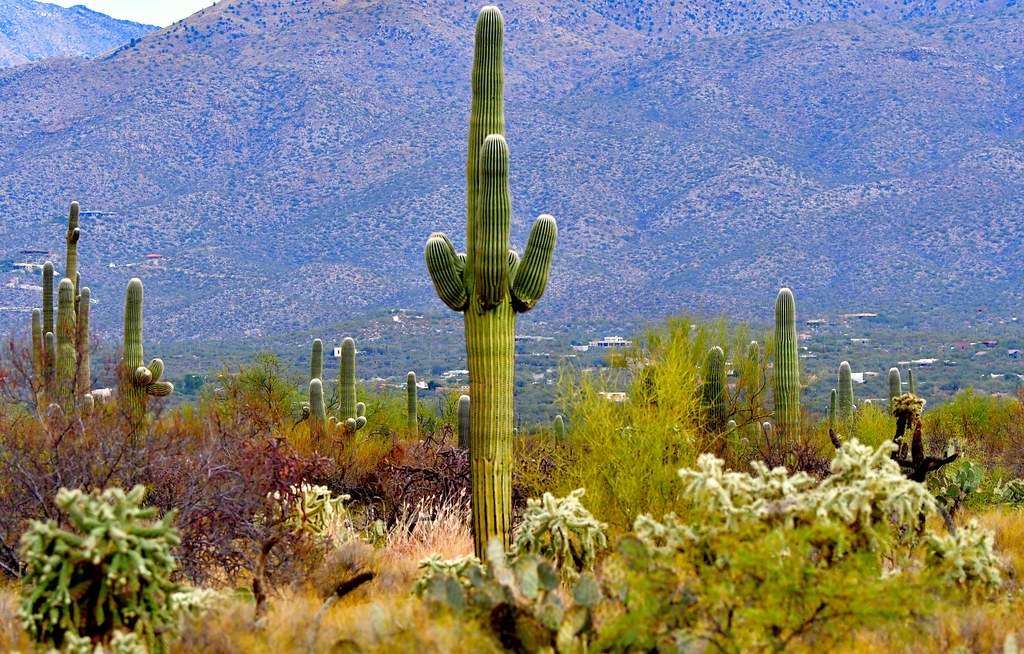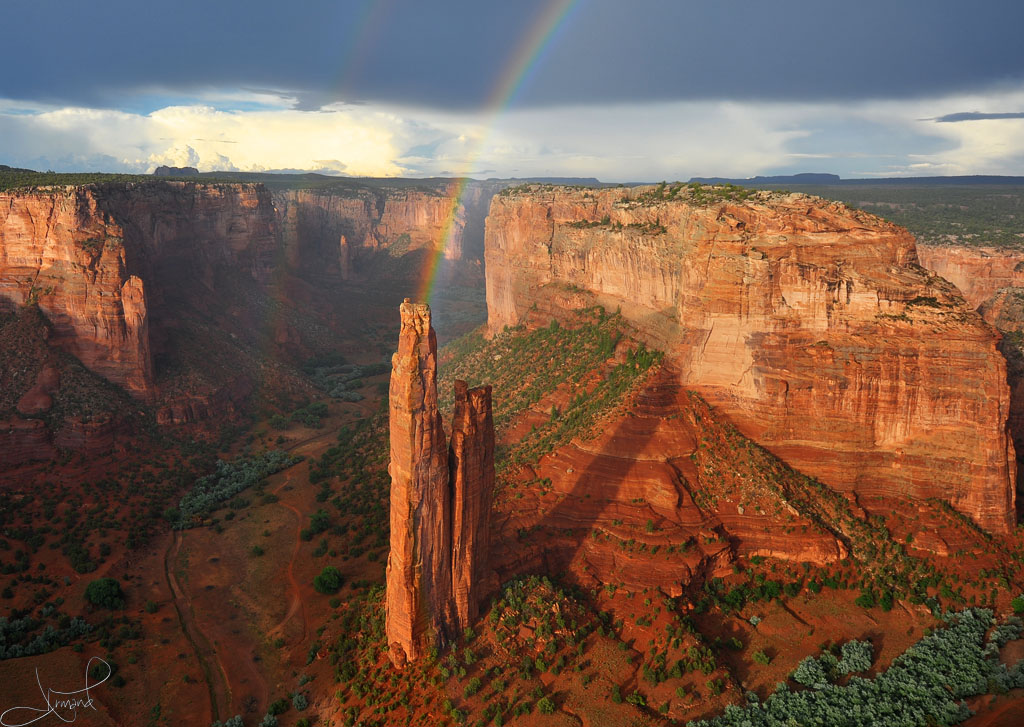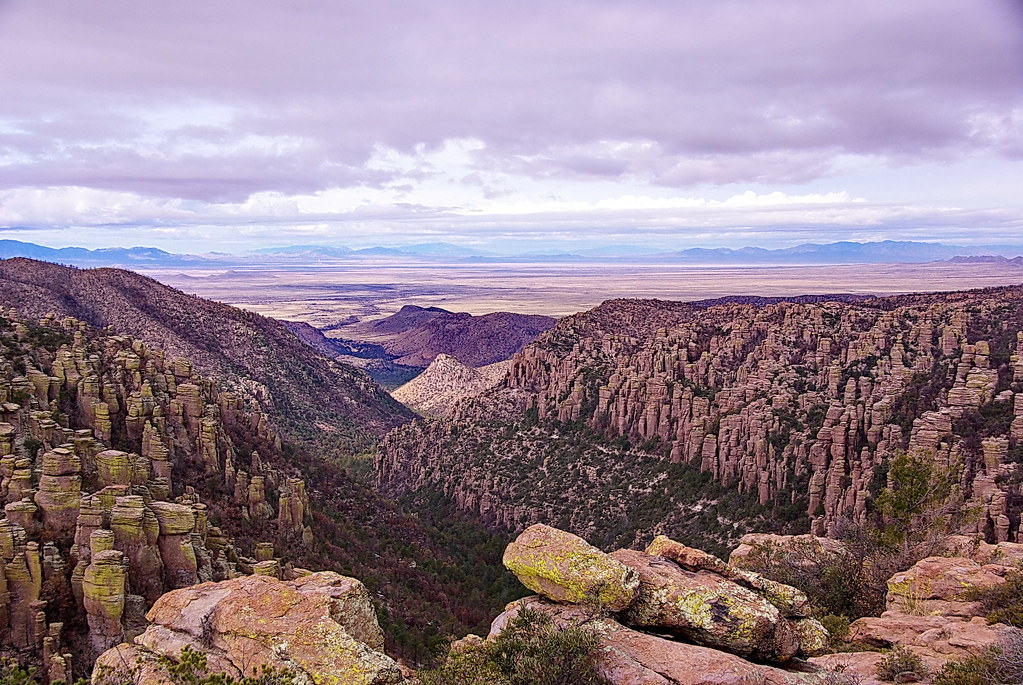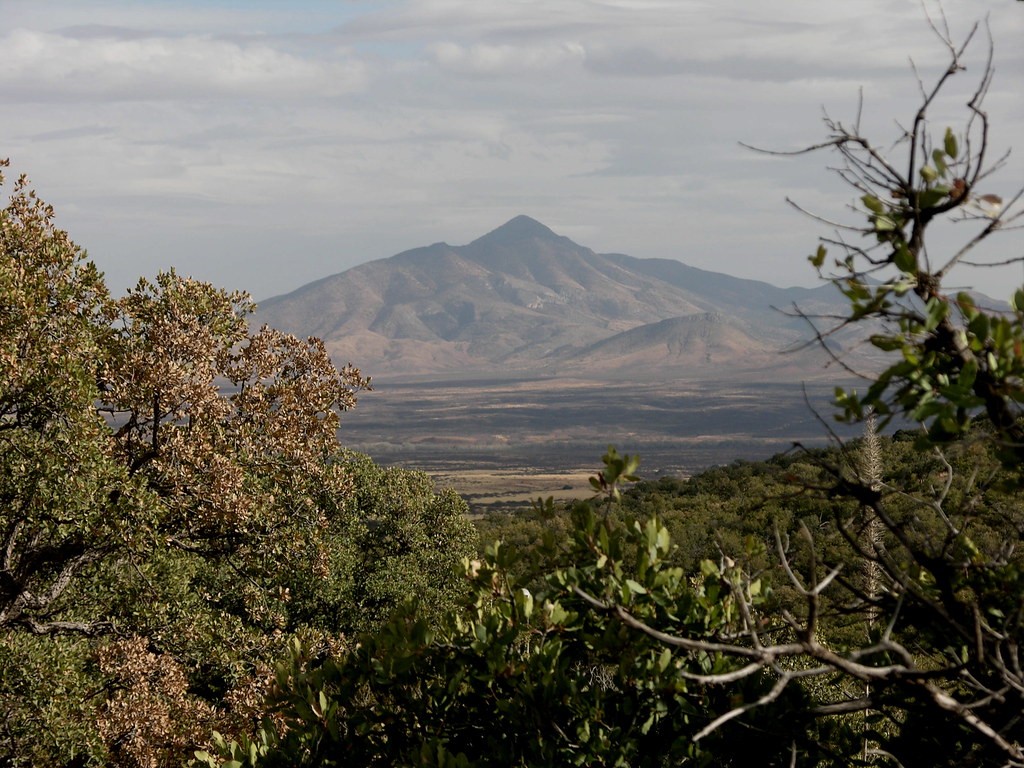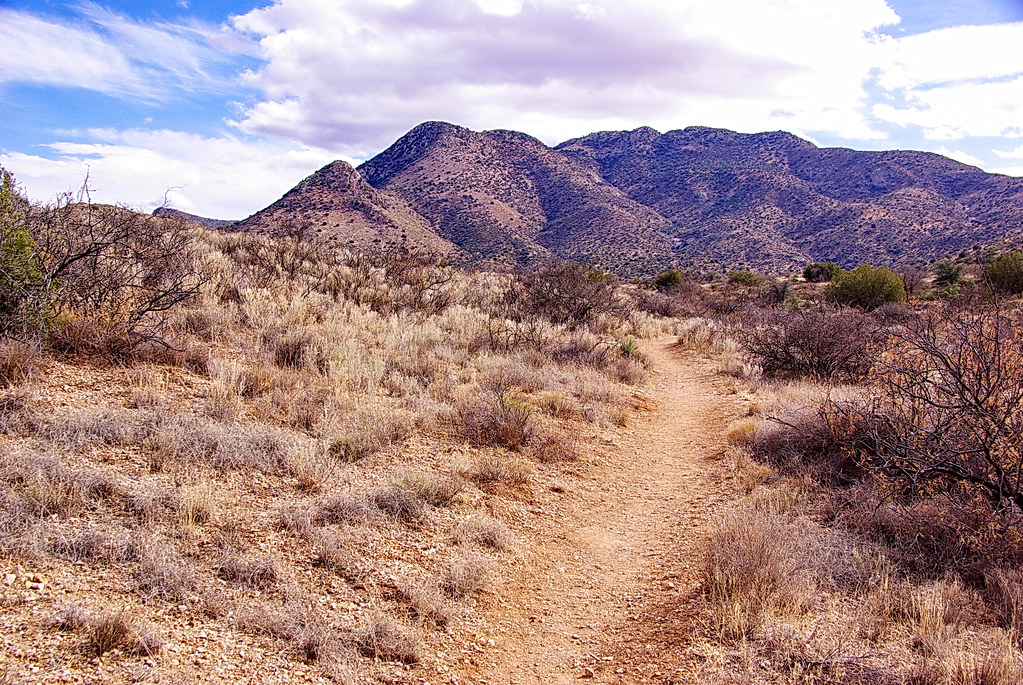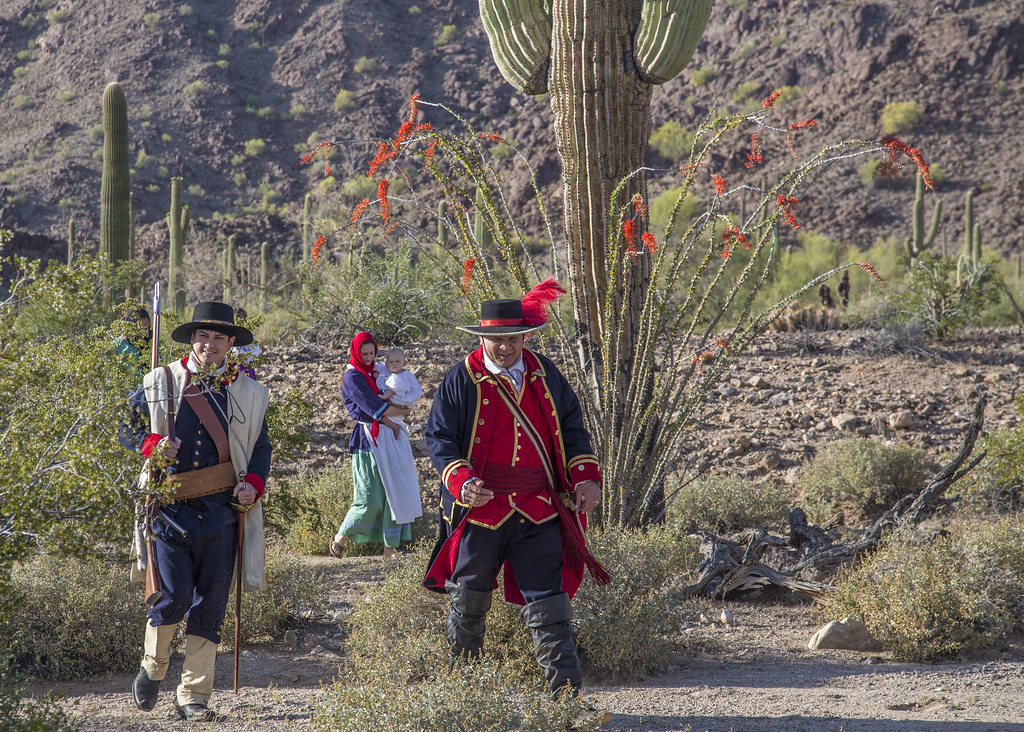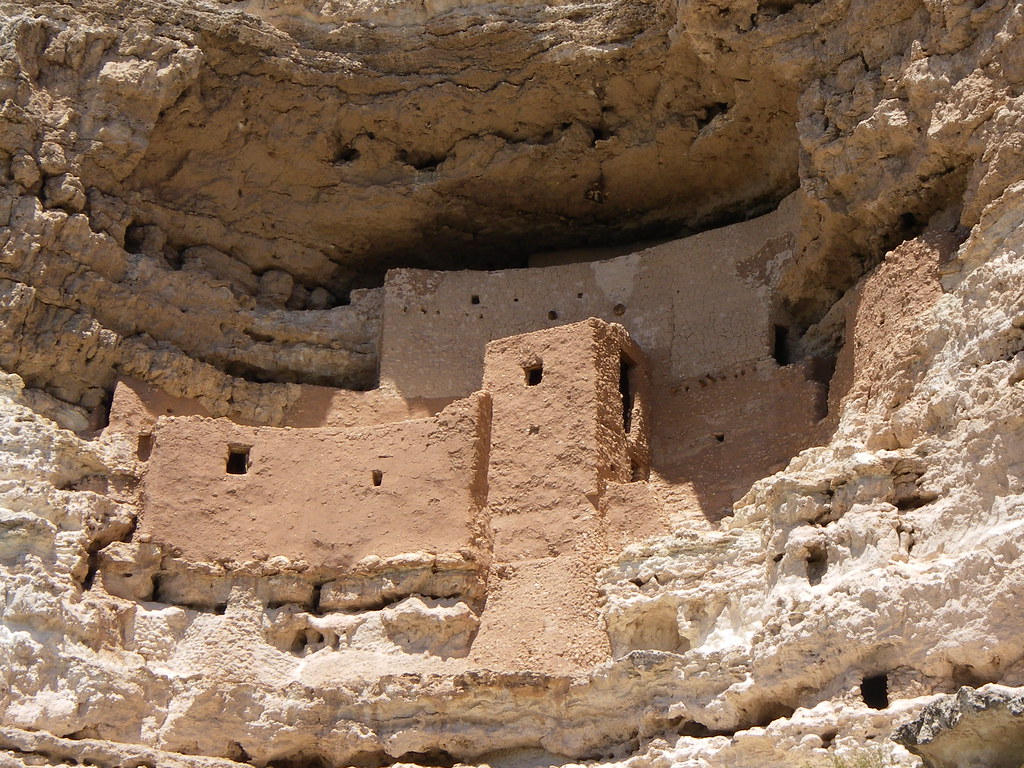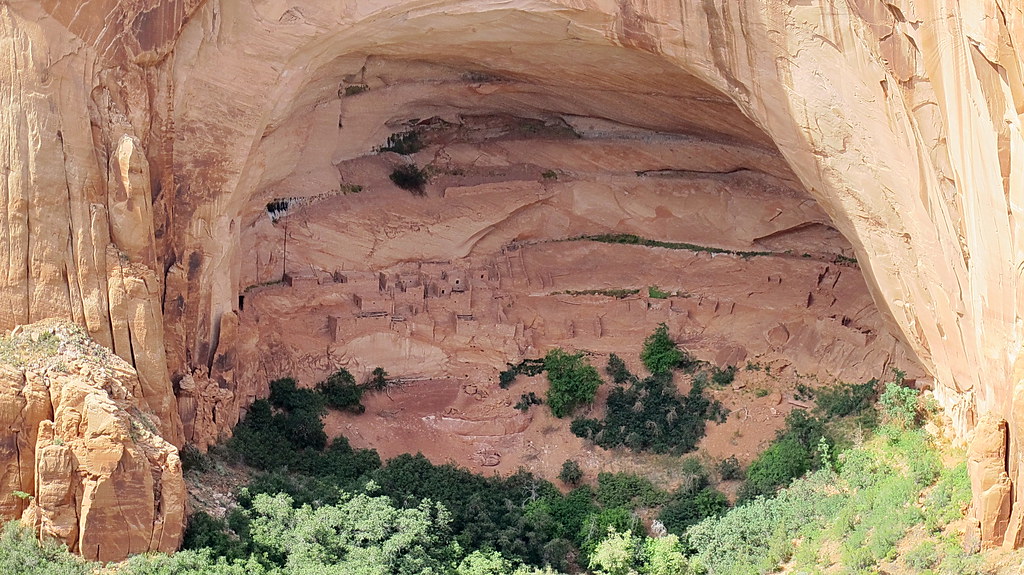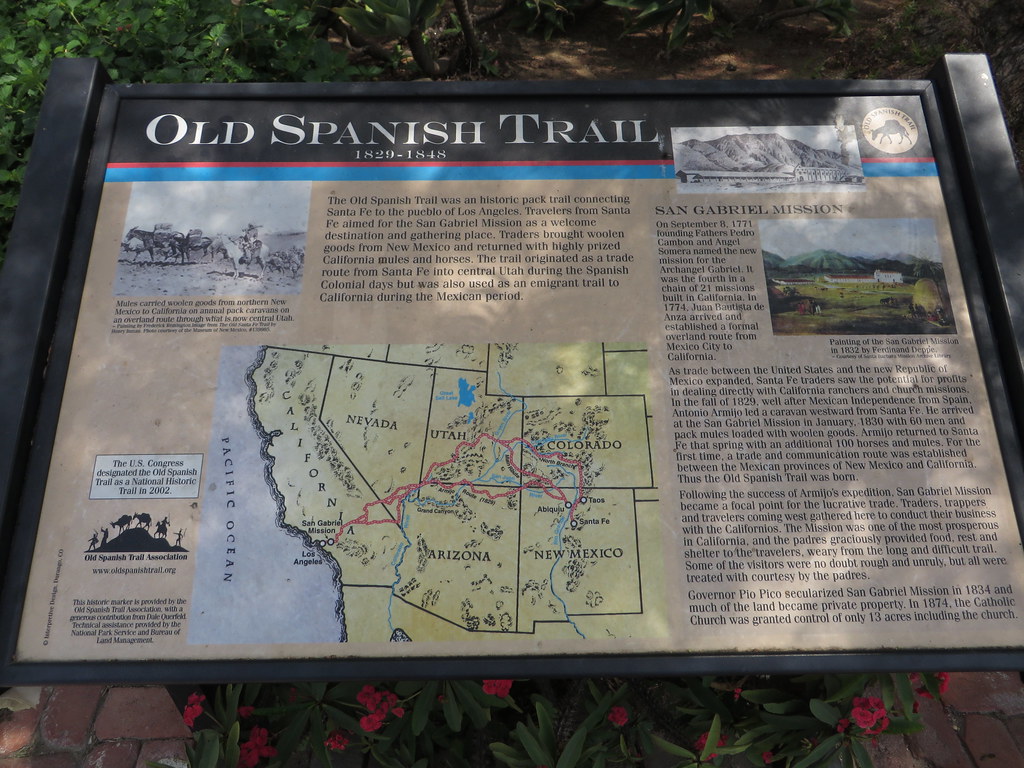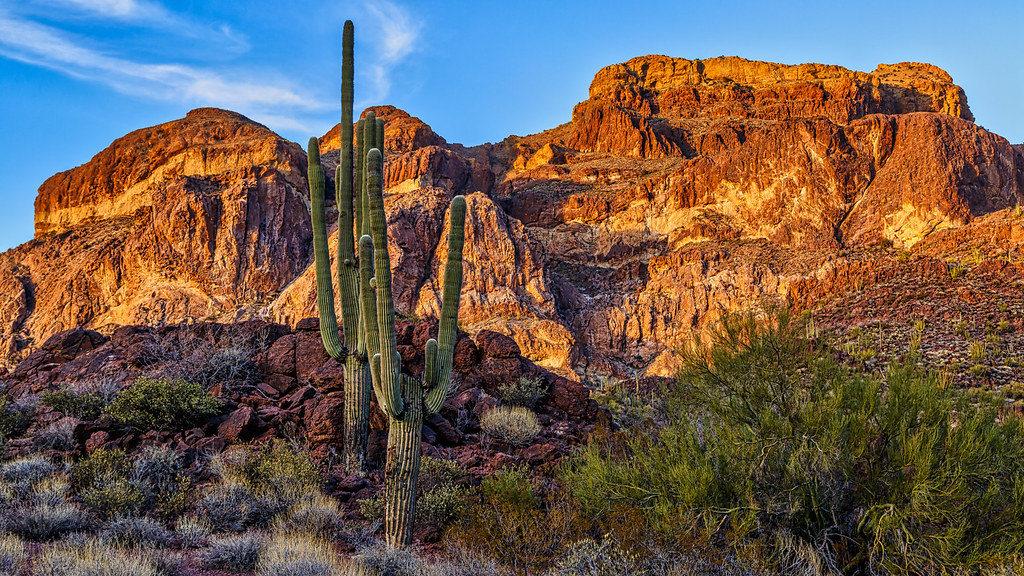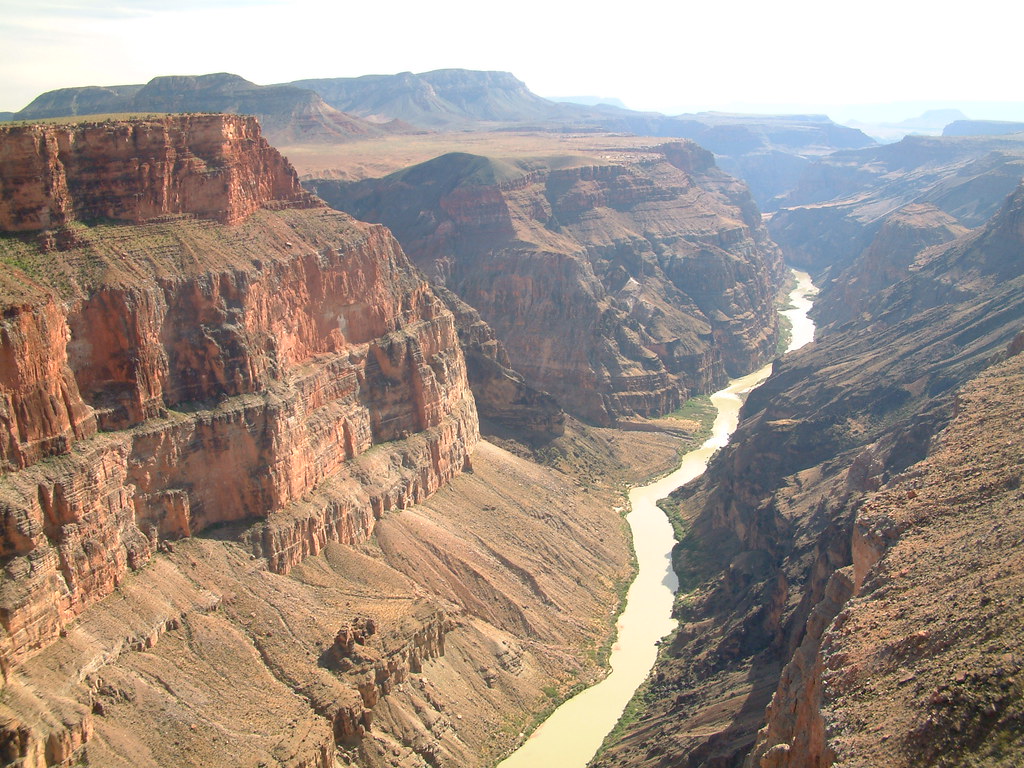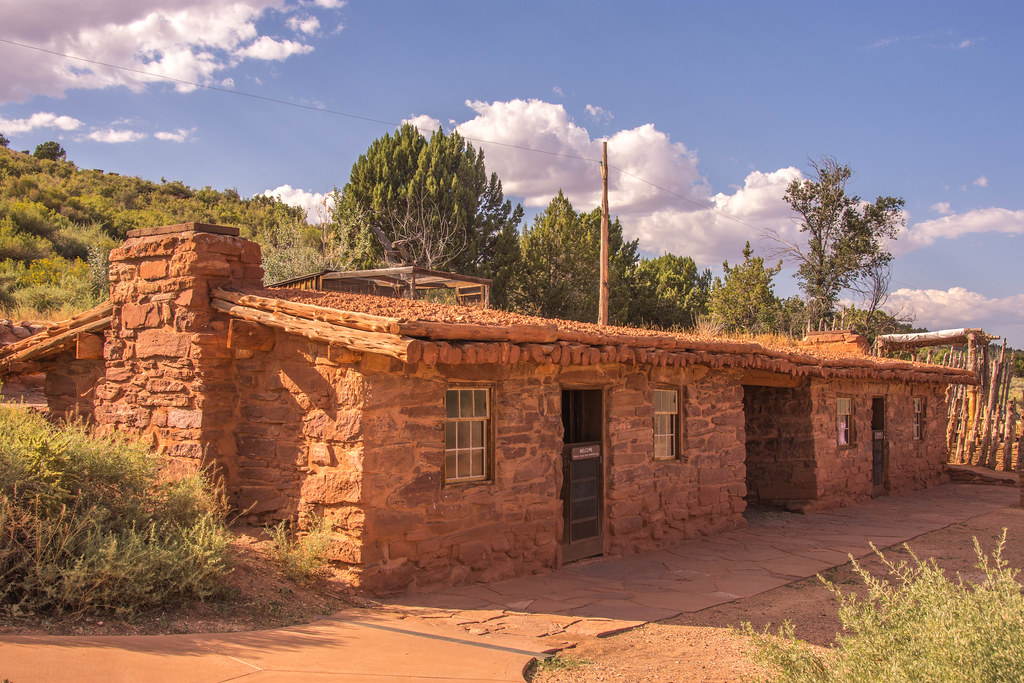Arizona is home to some of the most stunning landscapes on the planet. From the jaw-dropping cliffs of the Grand Canyon to the arid and rocky terrain of southern Arizona, there are endless scenes of natural beauty to admire and explore. And when it comes to national parks and monuments, there’s truly something for everyone.
Here’s a quick guide to some of the major attractions you’ll find at Arizona national parks and monuments.
You might also be interested in checking out national parks in New Mexico.
Arizona national parks map
Arizona is the sixth largest state in the US so there’s a lot of real estate for its numerous national parks. These sites can be found spread out across the state and it takes about five to seven hours to get from the southern portion of the state to areas up north where parks like the Grand Canyon are found (depending on how scenic you want to make the route).
Interestingly, Arizona is actually the only state in the US where parts of all four of the US desserts can be found: the Great Basin Desert, the Chihuahuan Desert, the Mojave Desert, and the Sonoran Desert. But even with so many deserts spanning the state, the climate in Arizona can vary dramatically. For example, Flagstaff Arizona is home to a very cold and snowy winter and is the only city in Arizona where temperatures have not exceeded 100ºF.
Below is a map where you can see most of the Arizona national parks and national park sites listed.
Arizona national parks pass
Currently, there is no state-wide Arizona national parks pass. Instead, if you want to visit multiple Arizona national parks you probably want to look into the America The Beautiful annual pass. It allows the pass owner and accompanying passengers in a single, private, non-commercial vehicle to enter Federally operated recreation sites across the country, which means you get access to many different types of federal lands.
The annual pass can be purchased for $80 online at the NPS store here.
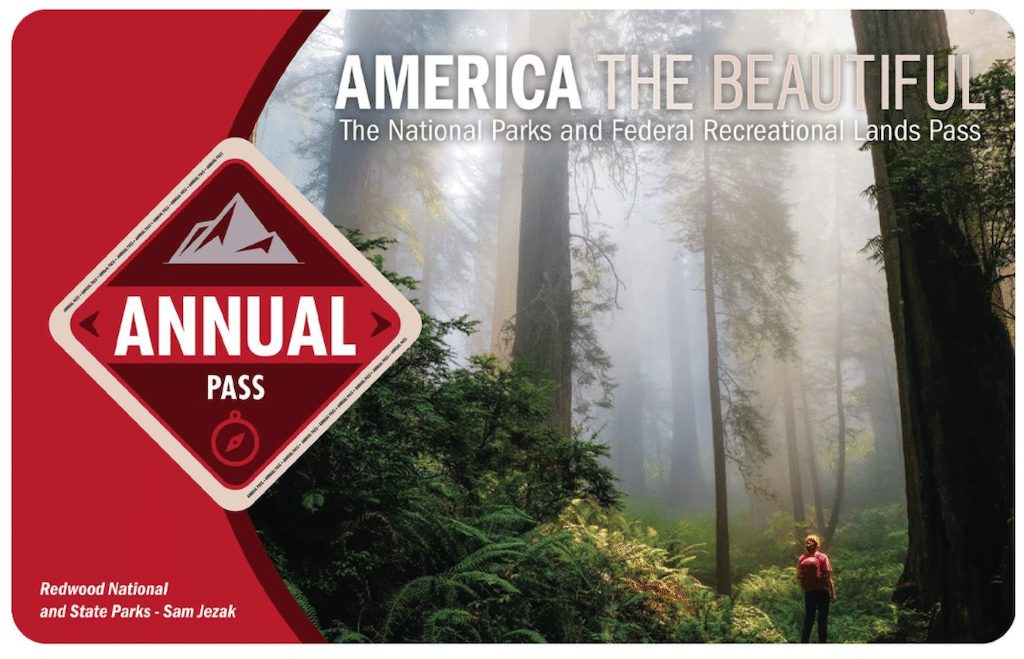
Tip: Use the free app WalletFlo to help you travel the world for free by finding the best travel credit cards and promotions!
Arizona State Parks pass
Although you can’t get an annual pass dedicated solely to Arizona national parks, they do offer an annual pass to Arizona State Parks.
There’s both a standard annual pass and a premium annual pass.
Standard annual pass
The Standard annual pass is $75.00 plus a $7.00 handling fee.
It allows day-use access at all Arizona State Parks for pass holder and up to three additional adults in the same vehicle, except at Lake Havasu, Cattail Cove, Buckskin Mountain, Patagonia Lake, River Island and Slide Rock State Parks on weekends (Fridays, Saturdays and Sundays) and state holidays from April 1st to October 31st.
Premium annual pass
The Arizona State Parks Premium Annual Pass is $200.00 plus a $7.00 handling fee.
It allows for access at all Arizona State Parks for the Pass Holder, and up to three additional adults in the same vehicle. You want to go with this option if you want to include access to Lake Havasu, Cattail Cove, Buckskin Mountain, Patagonia Lake, River Island and Slide Rock State Parks on weekends and State holidays from April 1st to October 31st.

Arizona national parks
Below is my quick guide to Arizona national parks. I’ll start with the actual national parks in Arizona and then get into all of the different types of national park sites, such as national monuments and national recreation areas.
This article barely scratches the surface in terms of what these sites have to offer but you should have a good idea of what some of the major highlights are after reading this article.
1. Grand Canyon National Park
You might have heard of this place before…. Grand Canyon National Park is the second most visited national park in the entire country (behind Great Smoky Mountains National Park) but it’s arguably the most iconic US national park.
At a mile deep, it’s a surreal feeling to look out to something so vast and it’s difficult to comprehend its massive size and geological history which spans millions of years.
It’s a little hard to believe but the average visiting time to the Grand Canyon is under 20 minutes!
But you can get a lot more from the park by exploring one of the many trails. There are several easy trails that you can explore and also some strenuous trails that will require overnight camping in the canyon. Beyond hiking you can explore the canyon via mule trips, helicopter rides, scenic drives, and whitewater and smoothwater raft trips.
The Grand Canyon is divided into the South Rim and the North Rim. The South Rim is more popular as it’s often easier to get to but many people prefer the North Rim since it can be less crowded and some even say the views are better.
2. Petrified Forest National Park
Petrified Forest National Park is home to some fascinating geological terrain and there’s a tremendous amount of things to do at this Arizona national park.
First, you might want to explore it via automobile, hitting up all of the fantastic scenic overlooks along the 28-miles scenic drive. If you catch it shortly after rain comes through, you won’t believe how colorful some of the terrain can be like the “Teepees” pictured below.
If you want to get out and move around, there are some maintained trails where you can get up close to this otherworldly terrain with hikes like the Painted Desert Rim Trail or Blue Mesa Trail. Or if you’re in the mood for something a bit more adventurous, you can look into a number of backcountry options and camping.
3. Saguaro National Park
The nation’s largest cacti grow in this national park outside of Tucson, Arizona.
These majestic plants are known as Saguaro Cactus and can hold up to 200 gallons of water. These giant cacti take their time to reach their peak heights as they only grow between 1 to 1.5 inches in the first eight years of their life. And branches don’t even appear until the saguaro reaches 50 to 70 years of age!
Saguaro National Park is divided into two districts: East and West (but you only have to pay the entrance fee once). Together, they offer more than 165 miles of hiking trails, which can range from short hikes on interpretive nature trails or backcountry excursions. Both districts have scenic drives worth checking out, too.
The East District has the 8-mile Cactus Forest Loop Drive while the West District has the 6-miles unpaved scenic Bajada Loop.
You can view maps of these parks here.
4. Canyon de Chelly National Monument
Located in northeastern Arizona, Canyon de Chelly National Monument is home to some stunning canyon scenery. Even if you’re on a road trip with limited time, it’s worth stopping by this place to appreciate its natural beauty on one of its two major scenic drives.
I’d recommend devoting a couple of hours to the many overlooks found on the South Rim but the North Rim can be worth your time, especially in the morning when the lighting is ideal.
The south Rim is also where you’ll find Spider Rock which is a massive rock spire that sits in the middle of the canyon, rising to 750 feet. There’s also some interesting ruins to check out on the South Rim called the White House ruins, which can be accessed on a hike via a 600 feet down and back up switchback trail.
The park has a lot of other great hikes but you’ll probably need a park ranger or authorized Navajo guide to get around.
5. Case Grande Ruins National Monument
Case Grande Ruins National Monument is home to one of the largest prehistoric structures ever built in North America. It was built by ancient Sonoran Desert people who were sophisticated enough to develop wide-scale irrigation farming and extensive trade connections which remained in existence for over 1,000 years until 1450 AD.
Stop by the Visitor Center and pick up a guide to learn about the Hohokam Culture and watch the short orientation video and then take a short tour of the Casa Grande and learn all about its fascinating ancient history along with all of the mystery that Case Grande still holds today.
Tip: Use the free app WalletFlo to help you travel the world for free by finding the best travel credit cards and promotions!
6. Chiricahua National Monument
Chiricahua National Monument is known as the “Wonderland of Rocks” and for good reason. It’s home to some of the most beautiful rock formations in the country, which often come in fascinating shapes and sizes like the famous “Big Balanced Rock.”
You can embark on a beautiful 8-mile paved scenic drive to take in many of the viewpoints, some of which offer panoramic views of these beautiful rock formations. If you really want to get up close to these volcanic rock formations, there’s plenty of great hikes (both easy and strenuous) for you to choose from. Camping is also a major attraction here and now you can make your reservations online.
And although it gets warm in the summer, the elevation and cooling monsoon rains often keep the temperatures within reason as summer highs don’t usually stay over 90ºF for very long.
7. Coronado National Monument
Coronado National Memorial was created to educate the public on the Coronado Expedition, which was led by captain general Francisco Vázquez de Coronado in 1540 and which changed the dynamics in this region both culturally and biologically.
The monument offers a great view of the San Pedro River which was likely the same corridor that the Coronado Expedition used on their way to the mythical “Cíbola,” believed to be one of the Seven Cities of Gold.
It’s also home to Coronado Cave which may have been used by humans as a shelter and hideout by middle archaic people as long as 8000 years ago and by more recent cultures such as the Chiricahua Apache and Mexican and European miners. It’s now one of the few undeveloped caves in southern Arizona, which you can explore today.
8. Fort Bowie National Historic Site
Fort Bowie was a 19th-century outpost of the United States Army near the present day town of Willcox, Arizona. The fort was created as a result of violent clashes like the Battle of Apache Pass in July 1862.
Today, Fort Bowie National Historic Site commemorates the conflict between Chiricahua Apaches and the U.S. military, which was one of the major conflicts that existed between US soldiers and Native Americans as the US expanded west.
In addition to learning more about the struggles of western expansion by touring the ruins of Fort Bowie and viewing the exhibits inside the visitor center, you can do a bit of hiking at the park and check out some of the interesting local flora and fauna. The park is also known for having great bird watching.
9. Glen Canyon National Recreation Area
Spanning part of Arizona and Utah, Glen Canyon National Recreation Area is home to Lake Powell, which is a stunning man made reservoir (with a controversial past) that lies between the beautiful red rock canyons.
Due to the presence of the lake, this is a very popular boating destination — you’ll find everything from luxury boats to fishing boats with several launch points.
There are no maintained trails in Glen Canyon National Recreation Area but if you’re down to go camping there you can explore all of the canyon’s crevices and slot canyons all day if you wish.
There are also several day hikes in the nearby area that you can take advantage of. You can also try one of the scenic drives, some of which are a mix of paved and dirt roads so there’s a chance that you’ll need a 4×4 on some of those routes.
Glen Canyon National Recreation Area is also close to several stunning natural wonders like Horseshoe Bend, Antelope Canyon, and the natural bridge at Rainbow Bridge National Monument. If you travel to the area, I highly recommend combining a few of these destinations together into a multi-day trip.
10. Hubbell Trading Post National Historic Site
Hubbell Trading Post National Historic Site is home to the oldest operating trading post on the Navajo Nation, which has been in service since 1878.
Today you can visit the Hubbell family home to check out their collection of Southwestern Art and Native American Arts and Crafts and historic farm equipment, horses, chickens, and Navajo Churro sheep.You can also get some shopping done if you’d like some locally crafted souvenirs or goods.
11. Juan Bautista de Anza National Historic Trail
Juan Bautista de Anza National Historic Trail is a 1,210-mile that takes you on a journey from from Nogales on the U.S.-Mexico border in Arizona, through the California desert and coastal areas in Southern California and the Central Coast region to San Francisco.
The trail traces back one of the pioneering journeys of Juan Bautista de Anza, who In 1775-76, led around 240 men, women, and children through New Spain to establish the first non-Native settlement at the San Francisco Bay.
There are many historic sites to see along the way in both Arizona and California. Along the way, you’ll learn about the stories of the expedition, gain a better understand the Native American cultures who provided guidance on the expedition, and better understand the influences that Spanish colonial settlements have in present-day Arizona and California.
To see a map of this long journey you can click here.
12. Lake Mead National Recreation Area
Lake Mead National Recreation Area straddles the border between Arizona and Utah is a vast and diverse recreation area offering a little bit of something for everyone.
With two lakes, Lake Mead and Lake Mojave, the site offers some of the best sport fishing in the US along with boating and other water activities like kayaking, canoeing, and water skiing. And if you’re feeling a bit bold, there’s also excursions through the national water trail, Black Canyon.
You can also get going in your car on one of the many scenic drives in the park. There’s plenty of places to hike as well though note that temperatures can get to 120ºF in the summer even in the shade! So make sure you pick a good time of year (anytime but summer) to get your hiking fix.
13. Montezuma Castle National Monument
This place was one of the four original US national monuments and gained its status via a declaration in 1906 by President Theodore Roosevelt. The monument houses well-preserved dwellings from the Sinagua people, a pre-Columbian that existed here between approximately 1100 and 1425AD.
The name Montezuma Castle is a bit misleading, though. When European-Americans first discovered the site in the 1860s, they named the ruins after the famous Aztec emperor Montezuma since they mistakenly believed he shared a connection to the dwellings.
And this wasn’t exactly a castle but more of a “prehistoric high rise apartment complex.” Still, it’s one of the best-preserved ruins in the region and worth a visit.
14. Navajo National Monument
Navajo National Monument preserves the sandstone remains of villages built by prehistoric Puebloan Ancestors, which date from 1250AD to 1300AD. Today, the monument is home to three well-preserved cliff dwellings of the Ancestral Puebloan People: Broken Pottery (Kitsʼiil), Ledge House (Bitátʼahkin), and Inscription House
Broken Pottery and Ledge House are two structures worth checking (look into free ranger-led tours). Both structures were constructed of sandstone, mud mortar, and wood. Some of these have remained completely unchanged for 700 years, a testament to how skillful these prehistoric people were. They were also incredibly resourceful as they thrived in a high desert environment, where they hunted wild game and grew corn, beans, and squash.
15. Old Spanish National Historic Trail
Old Spanish National Historic Trail will take you through several states including: AZ, CA, CO, NV, NM, UT. It follows along the Old Spanish National Historic Trail between Santa Fe, New Mexico, and Los Angeles, California. Take a look at some of the route maps here.
You’ll cross over 40 sites where you can get your national parks passport book stamped. Obviously this isn’t a hike that you’re just going to take on a whim but it’s one of the most historic trails in the American Southwest and worth looking into if you’re into long-distance hiking and camping.
16. Organ Pipe Cactus National Monument
Organ Pipe Cactus National Monument is located at the extreme southern end of Arizona and shares a border with the Mexican state of Sonora. It is the only place in the US where the organ pipe cactus grows wild. Organ Pipe Cactus are fascinating plants and can live to be over 150 years old, and they produce their first flower near the age of 35.
The park is known for being a UNESCO biosphere reserve. That status has helped preserve pristine ecosystems all around the world and attracted scientists from around the world to Organ Pipe Cactus who have helped us better understand the Sonoran Desert along with the impact humans have made on this landscape.
Scenic drives are very popular at this park and there are a hand full to choose from. The most popular drive is the 21-mile Ajo Mountain Drive with the Puerto Blanco Drive coming in a close second. There are also many hiking trails, which range from easy to strenuous that you can choose from.
17. Grand Canyon-Parashant National Monument
Grand Canyon-Parashant National Monument is truly an off the grid experience. It’s a very remote site where you won’t have cell phone service, paved roads, and other luxuries you take for granted each day.
The monument is found on the northern edge of the Grand Canyon. If you have a high clearance 4×4 vehicle, you can explore its beautiful scenic drives, some of which will take you through southern Utah and to some stunning Grand Canyon overlooks. Other sites you might come across are volcanoes, Native American petroglyphs, cattle and cowboy line shacks, and historic schoolhouses.
The monument also boasts some of the best conditions for viewing the night sky. The combination of a lack of light pollution, clear skies, and high elevation plateaus earned this site Gold-tier status from the International Dark-Sky Association.
18. Pipe Spring National Monument
Pipe Spring National Monument is a national monument known for being rich with American Indian, early explorer, and Mormon pioneer history. The water found at this desert oasis supported life dating back to the Ancestral Puebloans and Kaibab Paiute Indians, who lived off the spring for at least a thousand years.
The monument will educate you on pioneer and Kaibab Paiute life by allowing you to explore its museum, historic fort and cabins, garden, orchard, and Ridge Trail. You can look into things like the daily tours of Winsor Castle, “living history” demonstrations during summer, and a half-mile trail that offers a look into the American Indian and pioneer life as it existed in the Old West.
Final word on Arizona national parks
As you can tell, there’s no shortage of interesting things to see and learn about at Arizona national parks. Because some of these parks and monuments are clustered together, it makes sense to go in with a plan to visit these together and often makes sense to go with the annual pass for $80 to save money.
Daniel Gillaspia is the Founder of UponArriving.com and the credit card app, WalletFlo. He is a former attorney turned travel expert covering destinations along with TSA, airline, and hotel policies. Since 2014, his content has been featured in publications such as National Geographic, Smithsonian Magazine, and CNBC. Read my bio.

